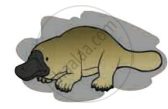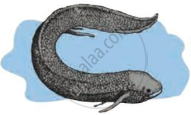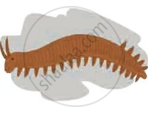Advertisements
Advertisements
Question
Observe the given images and answer the following questions.

- Which evolutionary evidence does it indicate?
- What does it prove?
- State another example of evolutionary evidence.
Solution
- The given picture indicates the morphological evidence of evolution.
- Morphological evidence is based on the similarity of size, shape or structure of organs among a group of organisms proving that they evolved from the same ancestor.
- Other examples of evolutionary evidence: Anatomical evidence, paleontological evidence, vestigial organs, embryological evidence, connecting links.
APPEARS IN
RELATED QUESTIONS
Differentiate between homology and analogy. Give one example of each.
Select two pairs from the following which exhibit divergent evolution. Give reasons for your answer.
(i) Forelimbs of cheetah and mammals
(ii) Flippers of dolphins and penguins
(iii) Wings of butterflies and birds
(iv) Forelimbs of whales and mammals
State a reason for the increased population of dark coloured moths coinciding with the loss of lichens (on tree barks) during industrialization period in England.
An example of homologous organs is
Enlist any four sequential evolutionary names of human ancestors.
Name the scientists who Discovered the fossil of Australopithecus
Explain the evolution of giraffe's neck according to Lamarck's theory of evolution.
Name any two temporary embryonic structures in vertebrates which provide evidence for evolution.
Name two animals having homologous organs and two having analogous organs. Name these organs.
The organs which perform similar functions but have different basic structure are called :
(a) asymmetric organs
(b) analogous organs
(c) homologous organs
(d) homophonic organs
The wings of a housefly and the wings of a sparrow are an example of :
(a) analogous organs
(b) vestigial organs
(c) respiratory organs
(d) homologous organs
X, Y, and Z are three animals. The animal X can fly but animal Y can only run on ground or walls. The forelimbs of animals X and Y have the same basic design but they are used for different purposes such as flying and running respectively. The animal Z became extinct an long time ago. The study of fossils of Z tells us that it had some features like those of X and some like those of Y. In fact, Z is said to form a connecting link in the evolutionary chain of X and Y.
(a) What could the animals X, Y and Z be?
(b) What name is given to the forelimbs like those of X and Y which have the same basic design but different functions?
(c) Name one feature in which Z resembled X.
(d) Name one feature in which Z resembled Y.
(e) Which is the correct evolutionary chain involving X, Y and Z : X → Z → Y or Y → Z → X?
You have potato, carrot, radish, sweet potato, tomato and ginger bought from the market in your jute bag. Identify two vegetables to represent the correct homologous structures.
(A) Potato and tomato
(B) Carrot and tomato
(C) Potato and sweet potato
(D) Carrot and radish
What do we call the degenerated or partially developed useless organs in living organisms? Enlist such organs in human body? How the same organs are useful in other animals?
Write short notes based upon the information known to you.
Connecting link
Differentiate between connecting links and the missing links.
Define phylogeny.
Short answer question.
Give the significance of fossils.
Similarities in the initial stages indicate the _______ evidence.
Find an odd one out.
Find an odd one out.
Appendix : vestigial organ : : Peripatus : ____________
What is carbon dating?
Explain any five types of evidence that support the theory of evolution.
Write the answers to the questions by observing the figure below.
 |
 |
 |
| (a) | (b) | (c) |
- Write the name of the animal ‘(a)’ in the figure.
- Write the name of the animal ‘(b)’ in the figure.
- Write the name of the animal ‘(c)’ in the figure.
- Which evolutionary evidence is illustrated by this figure?
- Write the definition of that evidence for evolution.
The degenerated and non-functional organs found in an organism are called ______.
The fossil remains of Archaeopteryx is a connecting link between ______
Tendons and ligaments are examples of ______.
Palaeontological evidence for evolution refers to the ______.
Evolutionary convergence is the development of:
Which is not a vestigial organ in a man?
The study of fossil evidence of evolution is called ______
Appearance of antibiotic-resistant bacteria is an example of ______.
What are we referring to? When we say 'simple organisms' or 'complex organisms'.
Write names of some vestigial organs in the human body.
